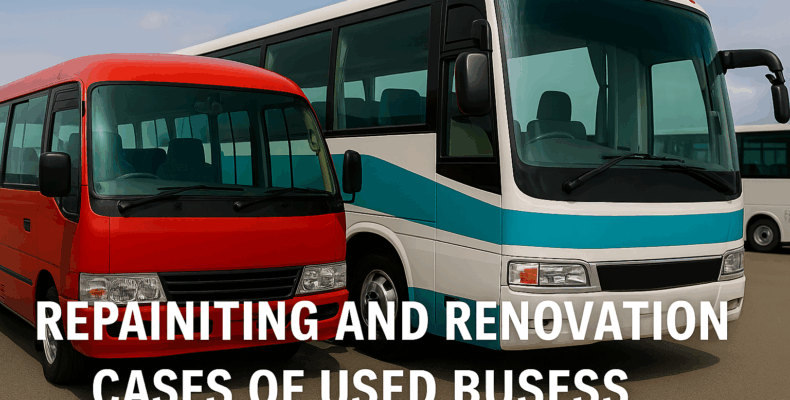Used Japanese buses are known for their reliability, durability, and high resale value. However, what truly sets them apart in the global market is how well they respond to repainting and renovation. With strategic upgrades, even buses with years of service can look — and function — like new. Whether you’re a transport company in Africa, a tour operator in the Caribbean, or a school fleet manager in South Asia, restoring a used Japanese bus can deliver premium performance at a fraction of the cost.
Let’s explore real-world examples of how refurbished buses meet international demands while boosting ROI.
Why Choose Japanese Buses for Renovation Projects?
To begin with, Japanese buses are built with long-term use in mind. Even models with high mileage can maintain structural integrity, efficient engine performance, and smooth drivability. This makes them perfect candidates for custom refurbishment.
Additionally, many Japanese brands use modular design, allowing body panels, interior parts, and AC units to be replaced or upgraded easily. That’s why companies worldwide prefer Japanese buses when seeking budget-friendly yet reliable transportation solutions.
Popular Renovation Styles in Global Markets
Different regions customize buses for different purposes:
-
In Kenya and Tanzania, buses are often repainted in school or shuttle company colors and fitted with new vinyl seats.
-
In Jamaica, music tour companies request new speaker systems, LED lighting, and high-end interior paneling.
-
In the Philippines, city buses get fresh decals and new air conditioning units to survive the tropical heat.
-
In the Pacific Islands, tourism buses are painted in vibrant tropical designs with panoramic window enhancements.
Every region has its own needs — and Japanese buses adapt easily.
What Renovation Actually Involves
Here’s what global buyers often do before exporting a used bus:
-
Full exterior repainting with UV-resistant automotive-grade paint
-
Interior refurbishment, including flooring, seat covers, ceiling panels
-
Engine bay detailing and mechanical tune-up
-
Window tinting or replacement
-
Logo and branding application
These improvements are both visual and functional, offering a bus that not only looks fresh but performs reliably.
Case Example: From Tokyo to Kampala
A used HINO MELPHA with over 180,000 km on the odometer was purchased by a Ugandan school in early 2024. The vehicle underwent repainting in the school’s colors, received new seat covers, and had minor rust spots removed. Once delivered, the bus impressed the school board so much they ordered a second unit within four months.
This case shows how small investments in renovation can yield high satisfaction and repeated business.
Where to Source Renovation-Ready Used Buses
For those ready to explore used Japanese buses for export and refurbishment, trust is essential. Here are five recommended Japanese used vehicle exporters that consistently deliver quality and support:
👉 Top 5 Trusted Japanese Used Truck Exporters for Global Buyers
These companies have years of experience, access to auction inventories, and export to over 100 countries. Whether you’re looking for Isuzu, Hino, Mitsubishi, Toyota, or Nissan buses — they have the options and expertise to help.
Final Thoughts: Upcycling the Smart Way
Refurbishing a used Japanese bus is more than a cosmetic upgrade — it’s a smart, sustainable business decision. With the right exporter and a clear renovation plan, your next bus can perform like new without the new price tag.
Explore your options today with the exporters trusted worldwide:
Top 5 Trusted Japanese Used Truck Exporters for Global Buyers
